I have been on a quest to find an LED wash fixture suitable for general use, with good color gamut and enough brightness to be used with 575w Source Four type fixtures. Though I don’t do events specifically for video or that use IMag, there always seems to be someone with a camera around, and so I wanted a video safe fixture. I decided that my buy point is getting all of this in a fixture less than $350. If I wasn’t able to find a suitable fixture at that price point, I would wait a year or so and stick to my conventional fixtures.
My first attempt was the Blizzard Q12A RGBA fixture. The review of that fixture is here: http://www.soundforums.net/live/threads/1938-Blizzard-Q12A-RGBA-LED-Par
The Blizzard has good color gamut and brightness, but suffers from some build quality idiosyncrasies, and is not video safe.
My next attempt is the Chauvet SlimPar Pro RGBA. http://www.chauvetlighting.com/slim-par-pro-rgba.html This fixture’s MSRP is $380 – slightly more than the Blizzard. This review will concentrate on the comparison to the Blizzard, as I’ve already done a comparison of the Blizzard Q12A to a number of conventional fixtures, and the Chauvet’s output is similar enough to the Blizzard that I don’t think going over that again is worth the time.
The Chauvet SlimPar Pro RGBA has 42 1 watt LEDs – 12 red, 12 green, 12 blue, and 6 amber. It is rated at 10,000 lux at 1m with a beam angle of 21 degrees and a field angle of 42 degrees according to the website, and 10,000 lux at 1m with a beam angle of 22 degrees and a field angle of 37 degrees according to the manual. I'm not sure which (if either) is correct. New products from many vendors seem to suffer from conflicting specifications.
Another conflicting spec is the number of linkable units. This number varies in the website, manual, and vendor videos from about 9 lights to 22. Based on the fixture's ~50w draw, linking 19 as the website suggests seems reasonable, providing a 10A load. The ability to power 30+ of these lights on a 20A circuit is truly incredible, and will solve many power problems of small operators like me who don't usually have the luxury of a multi-hundred amp distro.
The SlimPar is made of diecast aluminum, and is fanless. Like most similar LED fixtures, it has a split yoke so it can be used on the floor without some kind of extra plinth, and has an Edison outlet for pass-through power. The included power cord is fairly short – 4 feet or so, and has a locking IEC connector. Overall build quality is really good – this feels like a very pro fixture and has a nice glass lens cover. The included manual is reasonably good and is in English only.
Chauvet has an optional narrow angle lens that can be fitted by the end user. This converts the fixture to a 15 degree beam angle with a 28 degree field angle. The brightness is rated at 20,000 lux at 1m with the narrow lens.
Replacing the lens involves removing 4 allen screws to remove the bezel and protective glass, and another 5 #1 Phillips screws to remove the lens assembly itself. In my opinion this is too much goofing around to do on a per-gig basis, but is certainly easy enough to convert some of your stock to the narrower beam angle beforehand.

In all photos and videos, the Chauvet SlimPar Pro is on the left and the Blizzard is on the right.
Here are both fixtures with all channels at 100%

Here is the red channel of each at 100%

The green at 100%

Blue 100%

Amber 100%.

All of the above pictures are with the same exposure settings. As with the Blizzard, the amber channel is about half the brightness of the other colors. This is understandable for the SlimPar, as there are 6 amber lights, compared to 12 of the other 3 colors. I’m not entirely sure why that seems to be the general convention of LED wash fixtures – apparently the amber is just for saturation enhancement.
I tried taking some photos of secondary colors, but I don’t think the representation on my camera was good enough to publish. Both the Blizzard and the Chauvet make a great orange and a good yellow.
The amber channel’s contribution is somewhat subtle, but it does make a noticeable difference on pinks, yellows, oranges, and other warm colors.
Here is a pink without the amber:

Same RGB settings but adding amber:

The fixtures are quite similar in output. The Blizzard seems slightly brighter than the Chauvet. The Chauvet has a narrower beam angle than the Blizzard.
The Blizzard is a quad-color behind a single lens design. This prevents multicolored shadows for the most part, however the Blizzard’s field is blotchy – you can discern several hot spots of various colors due to the diodes hitting the lenses slightly differently.

The Chauvet has independent lenses for each diode, so it does cast some multicolored shadows. In spite of this, the beam is very smooth and is free of the color blotching the Blizzard suffers from. At the edges of the field, the Chauvet fixture does have some imperfect color overlap.
Two issues plague low cost LED fixtures – poor dimming curves that are “steppy” – particularly at low output settings, and flickering on video due to a slow PWM rate.
The Chauvet fixture lists solutions to these two issues as marquee features – several different dimming curves that mimic incandescent fixtures, and “flicker free” operation.
The Chauvet fixture has 4 dimming curve settings – off, dim 1, dim 2, and dim3. When set to off, the Chauvet fixture does indeed have the same stepping issues as the Blizzard. When set to any of the dim 1-3 settings, this problem is completely eliminated – the fixture somehow interpolates and smoothes the dimming, at the cost of slowing the dimming response a bit. I’m not sure why anyone would use dim 2 or dim 3 – they don’t seem to add anything to smoothness, and add more latency than necessary.
Video compatibility
This aspect has been a really interesting part of the journey for me. I spoke to Will from Blizzard before ordering the Q12A, and he said the PWM rate was 400 Hz and “they looked good on video”. After testing this and finding that they don’t look remotely good on video, I questioned whether he was mistaken about the 400Hz refresh rate, or if 400Hz wasn’t adequate. I was even more concerned and confused when Chauvet told me the refresh rate of the SlimPar Pro was also 400Hz, but that it was “flicker free”. This bothered me because I don’t have a local dealer with a good selection of the latest fixtures to compare and test, so I’ve had to buy a sample of what I was interested in myself. Too many failed attempts gets expensive.
I tested the refresh rate of the Blizzard fixture with a frequency counter and found it to be 370Hz.
I have shot several videos which are contained in the zip file attached to the post.
The video labeled 50pct2 is the fixtures at 50% power (Chauvet on left, Blizzard on right). This was shot with an AVCHD format camcorder in “30P” mode. My results weren't materially different in 60i mode.
The video labeled 25pct is the fixtures at 25%
You can see that the Blizzard on the right is unwatchable, and the Chauvet is fine.
The third video - Chauvet video, is zoomed in on the Chauvet. You can see slight banding. I’ve played with this in a couple “real world” situations, and unless you are shooting a full frame shot of one fixture, this isn’t a problem. Even with this slight issue, I believe it’s safe to call the Chauvet a video safe fixture.
When I had the cover off the Chauvet investigating replacing the lens, I probed around and the highest frequency I could find was 300Hz. This is highly interesting – it’s a lower frequency than the Blizzard. I don’t have an oscilloscope handy to see if there is some other mechanism going on – some kind of filter capacitor, multiple DC rails, etc., but whatever they are doing, it works.
Conclusion
The Blizzard Q12A isn't a bad fixture for overall brightness. For a DJ it's likely to be preferable to the Chauvet - lower cost, has a sound activated mode, and the quad diodes behind each lens. For theatrical use, the Blizzard isn't great - build quality is marginal, the fixture has a fan and quite a lot of light leaks out of the fan slots. Dimming isn't particularly smooth, and the fixture isn't video safe.
The Chauvet is a much more "pro" fixture, at least for my purposes. While the light output is slightly less than the Blizzard in my testing, the beam quality is better, the physical construction is MUCH better than the Blizzard, the fixture is video safe, and using the dim 1 curve, is very suitable for theatrical use.
The bottom line is I’m pulling the trigger on another batch of these. They are suitable for my quasi-theatrical corporate use, and the build quality is really nice – this is a fixture that won’t embarrass me to have amongst other pro gear.
If anyone would like to see a higher res version of the videos, let me know and I can get them to you.
My first attempt was the Blizzard Q12A RGBA fixture. The review of that fixture is here: http://www.soundforums.net/live/threads/1938-Blizzard-Q12A-RGBA-LED-Par
The Blizzard has good color gamut and brightness, but suffers from some build quality idiosyncrasies, and is not video safe.
My next attempt is the Chauvet SlimPar Pro RGBA. http://www.chauvetlighting.com/slim-par-pro-rgba.html This fixture’s MSRP is $380 – slightly more than the Blizzard. This review will concentrate on the comparison to the Blizzard, as I’ve already done a comparison of the Blizzard Q12A to a number of conventional fixtures, and the Chauvet’s output is similar enough to the Blizzard that I don’t think going over that again is worth the time.
The Chauvet SlimPar Pro RGBA has 42 1 watt LEDs – 12 red, 12 green, 12 blue, and 6 amber. It is rated at 10,000 lux at 1m with a beam angle of 21 degrees and a field angle of 42 degrees according to the website, and 10,000 lux at 1m with a beam angle of 22 degrees and a field angle of 37 degrees according to the manual. I'm not sure which (if either) is correct. New products from many vendors seem to suffer from conflicting specifications.
Another conflicting spec is the number of linkable units. This number varies in the website, manual, and vendor videos from about 9 lights to 22. Based on the fixture's ~50w draw, linking 19 as the website suggests seems reasonable, providing a 10A load. The ability to power 30+ of these lights on a 20A circuit is truly incredible, and will solve many power problems of small operators like me who don't usually have the luxury of a multi-hundred amp distro.
The SlimPar is made of diecast aluminum, and is fanless. Like most similar LED fixtures, it has a split yoke so it can be used on the floor without some kind of extra plinth, and has an Edison outlet for pass-through power. The included power cord is fairly short – 4 feet or so, and has a locking IEC connector. Overall build quality is really good – this feels like a very pro fixture and has a nice glass lens cover. The included manual is reasonably good and is in English only.
Chauvet has an optional narrow angle lens that can be fitted by the end user. This converts the fixture to a 15 degree beam angle with a 28 degree field angle. The brightness is rated at 20,000 lux at 1m with the narrow lens.
Replacing the lens involves removing 4 allen screws to remove the bezel and protective glass, and another 5 #1 Phillips screws to remove the lens assembly itself. In my opinion this is too much goofing around to do on a per-gig basis, but is certainly easy enough to convert some of your stock to the narrower beam angle beforehand.
In all photos and videos, the Chauvet SlimPar Pro is on the left and the Blizzard is on the right.
Here are both fixtures with all channels at 100%
Here is the red channel of each at 100%
The green at 100%
Blue 100%
Amber 100%.
All of the above pictures are with the same exposure settings. As with the Blizzard, the amber channel is about half the brightness of the other colors. This is understandable for the SlimPar, as there are 6 amber lights, compared to 12 of the other 3 colors. I’m not entirely sure why that seems to be the general convention of LED wash fixtures – apparently the amber is just for saturation enhancement.
I tried taking some photos of secondary colors, but I don’t think the representation on my camera was good enough to publish. Both the Blizzard and the Chauvet make a great orange and a good yellow.
The amber channel’s contribution is somewhat subtle, but it does make a noticeable difference on pinks, yellows, oranges, and other warm colors.
Here is a pink without the amber:
Same RGB settings but adding amber:
The fixtures are quite similar in output. The Blizzard seems slightly brighter than the Chauvet. The Chauvet has a narrower beam angle than the Blizzard.
The Blizzard is a quad-color behind a single lens design. This prevents multicolored shadows for the most part, however the Blizzard’s field is blotchy – you can discern several hot spots of various colors due to the diodes hitting the lenses slightly differently.
The Chauvet has independent lenses for each diode, so it does cast some multicolored shadows. In spite of this, the beam is very smooth and is free of the color blotching the Blizzard suffers from. At the edges of the field, the Chauvet fixture does have some imperfect color overlap.
Two issues plague low cost LED fixtures – poor dimming curves that are “steppy” – particularly at low output settings, and flickering on video due to a slow PWM rate.
The Chauvet fixture lists solutions to these two issues as marquee features – several different dimming curves that mimic incandescent fixtures, and “flicker free” operation.
The Chauvet fixture has 4 dimming curve settings – off, dim 1, dim 2, and dim3. When set to off, the Chauvet fixture does indeed have the same stepping issues as the Blizzard. When set to any of the dim 1-3 settings, this problem is completely eliminated – the fixture somehow interpolates and smoothes the dimming, at the cost of slowing the dimming response a bit. I’m not sure why anyone would use dim 2 or dim 3 – they don’t seem to add anything to smoothness, and add more latency than necessary.
Video compatibility
This aspect has been a really interesting part of the journey for me. I spoke to Will from Blizzard before ordering the Q12A, and he said the PWM rate was 400 Hz and “they looked good on video”. After testing this and finding that they don’t look remotely good on video, I questioned whether he was mistaken about the 400Hz refresh rate, or if 400Hz wasn’t adequate. I was even more concerned and confused when Chauvet told me the refresh rate of the SlimPar Pro was also 400Hz, but that it was “flicker free”. This bothered me because I don’t have a local dealer with a good selection of the latest fixtures to compare and test, so I’ve had to buy a sample of what I was interested in myself. Too many failed attempts gets expensive.
I tested the refresh rate of the Blizzard fixture with a frequency counter and found it to be 370Hz.
I have shot several videos which are contained in the zip file attached to the post.
The video labeled 50pct2 is the fixtures at 50% power (Chauvet on left, Blizzard on right). This was shot with an AVCHD format camcorder in “30P” mode. My results weren't materially different in 60i mode.
The video labeled 25pct is the fixtures at 25%
You can see that the Blizzard on the right is unwatchable, and the Chauvet is fine.
The third video - Chauvet video, is zoomed in on the Chauvet. You can see slight banding. I’ve played with this in a couple “real world” situations, and unless you are shooting a full frame shot of one fixture, this isn’t a problem. Even with this slight issue, I believe it’s safe to call the Chauvet a video safe fixture.
When I had the cover off the Chauvet investigating replacing the lens, I probed around and the highest frequency I could find was 300Hz. This is highly interesting – it’s a lower frequency than the Blizzard. I don’t have an oscilloscope handy to see if there is some other mechanism going on – some kind of filter capacitor, multiple DC rails, etc., but whatever they are doing, it works.
Conclusion
The Blizzard Q12A isn't a bad fixture for overall brightness. For a DJ it's likely to be preferable to the Chauvet - lower cost, has a sound activated mode, and the quad diodes behind each lens. For theatrical use, the Blizzard isn't great - build quality is marginal, the fixture has a fan and quite a lot of light leaks out of the fan slots. Dimming isn't particularly smooth, and the fixture isn't video safe.
The Chauvet is a much more "pro" fixture, at least for my purposes. While the light output is slightly less than the Blizzard in my testing, the beam quality is better, the physical construction is MUCH better than the Blizzard, the fixture is video safe, and using the dim 1 curve, is very suitable for theatrical use.
The bottom line is I’m pulling the trigger on another batch of these. They are suitable for my quasi-theatrical corporate use, and the build quality is really nice – this is a fixture that won’t embarrass me to have amongst other pro gear.
If anyone would like to see a higher res version of the videos, let me know and I can get them to you.
Attachments
-
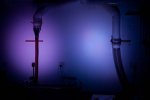 IMG_9660.jpg36.7 KB · Views: 1
IMG_9660.jpg36.7 KB · Views: 1 -
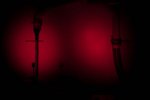 IMG_9661.jpg27.6 KB · Views: 1
IMG_9661.jpg27.6 KB · Views: 1 -
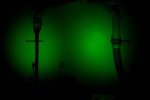 IMG_9662.jpg31 KB · Views: 1
IMG_9662.jpg31 KB · Views: 1 -
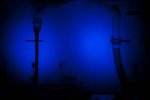 IMG_9663.jpg32 KB · Views: 1
IMG_9663.jpg32 KB · Views: 1 -
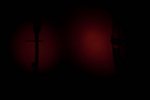 IMG_9664.jpg24.1 KB · Views: 1
IMG_9664.jpg24.1 KB · Views: 1 -
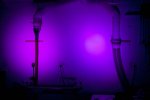 IMG_9670.jpg38 KB · Views: 1
IMG_9670.jpg38 KB · Views: 1 -
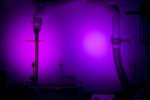 IMG_9671.jpg38.7 KB · Views: 1
IMG_9671.jpg38.7 KB · Views: 1 -
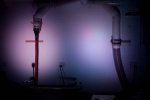 IMG_9669.jpg40 KB · Views: 1
IMG_9669.jpg40 KB · Views: 1 -
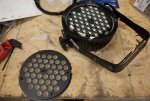 IMG_9677.jpg104.5 KB · Views: 1
IMG_9677.jpg104.5 KB · Views: 1 -
Chauvet videos.zip444.4 KB · Views: 0
Last edited:

